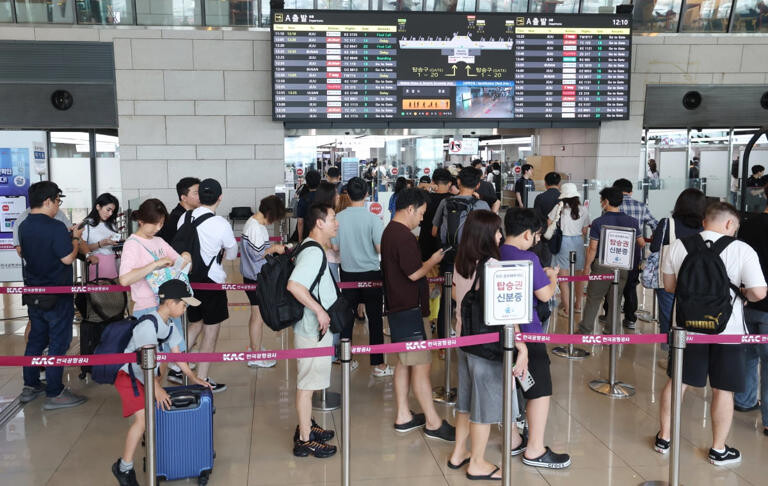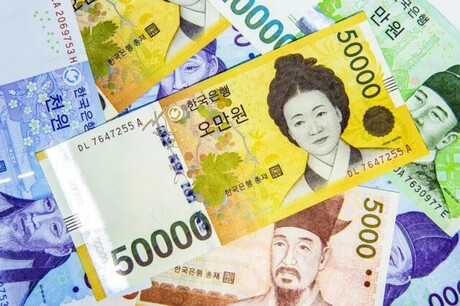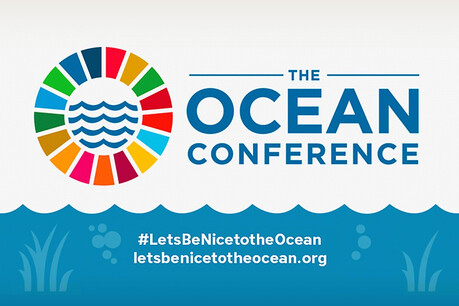
Starting today, many South Korean travelers heading to Tokyo and Fukuoka will experience more convenient entry into Japan. The introduction of dedicated immigration lanes for Koreans means shorter waiting times, as travelers will no longer have to queue with other international visitors.
Pilot Program Across Four Airports
To commemorate the 60th anniversary of diplomatic normalization between South Korea and Japan this year, the two nations are running a one-month pilot program in June. This initiative establishes dedicated immigration lanes for each country's citizens at four airports: Gimpo and Gimhae in South Korea, and Haneda (Tokyo) and Fukuoka in Japan.
The program targets short-term tourists who have visited the other country at least once within the past year. The process is straightforward. Korean tourists flying with Korean Air or Asiana Airlines to Japan can use the dedicated lanes after completing pre-registration via Japan's online immigration service, Visit Japan Web. Travelers simply need to capture the QR code screen for the dedicated immigration lane on Visit Japan Web and present it to the staff. Frequent travelers for business or family visits are also expected to benefit significantly, as their travel records are already stored in airport databases, expediting their clearance.
For years, Korean travelers have complained about the lengthy immigration procedures at Japanese airports, with Fukuoka Airport frequently cited as having the longest waiting times. In 2017, a seminar by the Kwanhun Club reported immigration procedures at Fukuoka Airport taking up to an hour. While wait times have improved since then, travelers still often faced long queues alongside other foreign nationals.
Since March 2006, South Korea and Japan have maintained a mutual visa waiver agreement. Should this new measure be expanded and implemented permanently, it is expected to further boost tourism between the two countries.
"Third-Party Reimbursement" Paves the Way for Rapprochement
The need for a streamlined immigration system between South Korea and Japan has been recognized for a considerable time. Business professionals frequently traveling between the two countries consistently highlighted the necessity of such a system, and Korean Air and Asiana Airlines had previously submitted proposals to the government. However, discussions stalled following the deterioration of bilateral relations. This breakdown occurred after the Korean Supreme Court's ruling on forced labor compensation in October 2018, which led to Japan's Abe Shinzo cabinet implementing export restrictions on semiconductor components in July 2019.
A turning point emerged in March 2023, when then-President Yoon Suk-yeol proposed a "third-party reimbursement" plan for forced labor compensation, under which the South Korean government would cover the compensation liabilities, effectively absolving Japan of direct responsibility. This move revitalized diplomatic ties, leading to a surge in tourist traffic between the two nations. According to statistics from the Korea Tourism Organization, approximately 8.82 million Koreans visited Japan in 2023, while around 3.22 million Japanese visited Korea, totaling over 12 million exchanges. This increased volume of cross-border travel renewed discussions on the necessity of simplifying immigration procedures.
Discussions among former government officials and experts who served in Japan began to emerge. A key argument was that for improved political relations between the two countries to be sustainable and prevent future regressions, ordinary citizens must tangibly experience the benefits.
"Time for a Korea-Japan 'Schengen Agreement'"
A crucial catalyst for the current initiative was the "Korea-Japan New Cooperation Vision Forum" held in May last year, co-hosted by the Ministry of Foreign Affairs and the Korea National Diplomatic Academy. This 1.5-track dialogue, involving both government and private sector experts, aimed to discuss the future direction of Korea-Japan relations.
During one session, attendees included then-Assistant Minister for Foreign Affairs Chung Byung-won, former Senior Presidential Secretary for Political Affairs Park Joon-woo (who helped design the Kim Dae-jung-Obuchi Joint Declaration), then-President of the Korea National Diplomatic Academy Park Cheol-hee (currently Ambassador to Japan), then-Director of Sejong Institute's Japan Research Center Jin Chang-soo (currently Consul General in Osaka), and Dongseo University President Jang Je-guk. It was at this forum that a concrete proposal was made to streamline immigration procedures, ultimately envisioning a Korea-Japan version of the Schengen Agreement.
The Schengen Agreement, signed in Schengen, Luxembourg, in 1985, is a pact among European countries for open borders, allowing citizens of member states to travel freely without passports. The agreement came into full effect in 1995, evolving into the current "borderless integrated management system," encompassing most EU member states and some non-EU countries.
Dongseo University President Jang Je-guk, who serves as the chief representative for the Korea-Japan Forum, suggested that with 10 million Koreans visiting Japan annually, measures like visa-free travel or dedicated immigration lanes for Koreans at airports would make citizens "feel the effects of improved Korea-Japan relations more directly." This was a concrete proposal for simplifying cross-border procedures. When Foreign Minister Cho Tae-yul took office, he established a task force for the 60th anniversary of Korea-Japan diplomatic normalization. Assistant Minister Chung Byung-won, who leads this task force, expressed his intent to actively review this proposal. Kim Chang-beom, Vice Chairman of the Federation of Korean Industries and a former diplomat, also noted at the meeting that both countries' industries held high expectations for simplified immigration procedures.
This reporter, who attended the meeting, observed that not only Foreign Ministry officials but most attendees resonated with President Jang Je-guk's concrete proposal. Having covered Japan as a correspondent, I understood the context behind this suggestion and felt it warranted an article. Coincidentally, Oh Kyung-soo, former Asiana Airlines Tokyo branch manager who worked in Japan around the same time, informed me that South Korea and Japan had previously operated a pre-entry screening system in 2002.
Based on this, a column was written arguing for the necessity of simplified entry procedures. The column highlighted that "as tourism between the two countries increases, Korean tourists, in particular, frequently experience long waits at Japanese immigration. It's not uncommon to queue for over 30 minutes after landing. To address this, a pre-entry screening system is needed. This system allows travelers to undergo the destination country's immigration screening during their departure process, enabling them to use a dedicated exit upon arrival. This system has a precedent, having been implemented by agreement between the two countries during the 2002 Korea-Japan World Cup, from May 15 to June 30. At that time, 14 immigration officers were dispatched to Narita and Incheon airports, respectively, to conduct joint immigration screenings. If both countries revive this system, travelers won't have to queue at immigration after landing, shortening travel times. While Korea has 15 airports, Japan has over 100, with nearly 20 international airports, suggesting Korea could benefit even more."
The pre-entry screening system implemented in 2002, where immigration screening for the destination country was conducted during departure, differs slightly from the current measure.
A Foundation for Future-Oriented Relations
The streamlining of Korea-Japan immigration procedures gained momentum and began to be discussed concretely within both governments. On September 6, 2024, President Yoon Suk-yeol and Japanese Prime Minister Kishida Fumio met in Seoul and agreed to "actively seek ways to promote human exchange, such as simplifying immigration procedures between the two countries." President Yoon stated, "If we work together, we can create momentum for Korea-Japan relations to take another leap forward next year, which marks the 60th anniversary of diplomatic normalization." Prime Minister Kishida emphasized, "It is important to make the fruits of our bilateral relationship tangibly felt by the citizens of both countries."
The full implementation of these simplified immigration measures could not begin in January this year, reportedly due to President Yoon's controversial declaration of emergency martial law in December last year. It is also rumored that the legal authorities in both countries, responsible for these measures, were not actively supportive. In the past, when visa waiver measures were implemented, legal authorities in both countries raised concerns about a potential increase in cross-border crime, thus taking a passive stance.
The Korea-Japan immigration simplification measures are garnering significant attention as they could form the basis of a Korea-Japan economic community, a concept proposed by SK Group Chairman Chey Tae-won in 2023. Whether this month's pilot program will be formalized and expanded depends on the new government's policy towards Japan, which takes office on the 4th. Regardless of who becomes president, there is a strong expectation that forward-looking measures will be taken to enable citizens of both countries to visit each other conveniently, fostering a future-oriented relationship.
[Copyright (c) Global Economic Times. All Rights Reserved.]




























